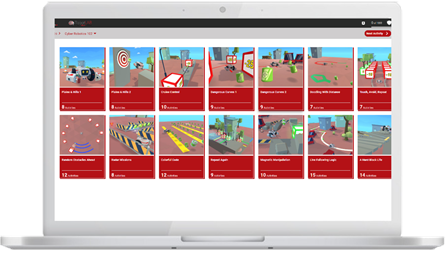A preschool education director shares what her school is doing to keep kids’ screen time to a minimum while fostering play-based learning at home.

Our current health crisis has given remote learning a global platform, with stay-at-home orders closing school buildings across the country. For early childhood educators who promote play- or project-based approaches, going remote can be a particularly daunting task.
Preschools rely heavily on an openness to free play within carefully curated environments. Through play, children develop foundational social and emotional, executive functioning, and academic skills. Early childhood educators often act as facilitators, building upon children’s natural curiosities. To inspire play, we curate spaces with open-ended materials that provoke children’s engagement with each other and their surroundings.
Even as preschools have closed their doors and transitioned to remote learning, it is essential that these core principles remain. It is possible to work with families to establish play-based, child-centered learning that pushes beyond engaging with a screen. At my school, we are keeping virtual meetings short—a maximum of 30 minutes—and instead giving families tools to foster learning at home.
Once a week, we host a large group sing-along with about 30 families. All other virtual meetings are in small groups of three to six children to accommodate turn-taking and ensure all children have opportunities to speak. Attendance is voluntary.
Here are the other things my preschool is doing to help families continue the learning at home—while staying true to what young children need most.
7 WAYS TO MAKE DISTANCE LEARNING WORK IN PRESCHOOL
1. Let children guide you: Although we’re not together, children are still playing, exploring, and learning in their homes. Ask families to submit photos or videos of children’s play. Look for trends in this documentation. During the small-group meetings, we display these photos or videos so children’s voices are heard and teachers are not the only leaders of remote discussions.
To take an example from my school, one of our teachers noticed a trend in the photos and videos we were receiving from families in one small group: Several children were playing with trains, cars, or trucks at home. During a virtual class meeting, this teacher sang automobile-related songs and posted videos of children playing with their automobiles so that children could see themselves and their friends. The children then discussed and compared their play.
2. Provide meaningful alternatives to screen time: Children between the ages of 2 and 7 are still in the preoperational stage, and it is developmentally inappropriate to expect their learning to be entirely screen-based. With the automobile-inspired play, the teacher invited children to continue their exploration after their virtual meeting by building automobiles using cardboard boxes. The teacher then invited families to share photos or videos of their children’s creations.
To inspire these real-world prompts and ensure that they’re feasible in your students’ homes, invite families to submit photos of their spaces or survey them to better understand the resources available to them. At our school, we’ve had at least half of families in each class share these details with us.
3. Remember that families are your partners: Families are excellent allies and can support you by extending children’s learning at home. However, we must remember that families have other responsibilities outside of supporting us with our lessons. Make attendance at the virtual meetings voluntary, and if a family misses one or neglects to complete a project, send a note to check in and share what was missed, but don’t require participation.
4. Remote relationship-building is critical: Relationships are the bedrock of our schools. Although we cannot be together, we can stay in touch and show we care. Work as a staff to connect with families once a week over the phone or via video chat—whatever works best for them. Send a school-wide email every day.
To ensure that this work is spread sustainably across your staff, create a schedule with faculty that rotates responsibility for writing the daily email so that each person’s voice is heard. Ideas for daily emails include: a note of gratitude, video recordings of read-alouds or songs, child-friendly cooking recipes, and directions for how to use household items to make paint or build an imaginary structure.
5. Music is magical: Children respond well to singing and dancing online. For a child, participating in a song or dance is an easy way to engage with a screen because they can follow the leader. The rules of this interaction are clear and translate well into an online format. Try a school-wide sing-along or use songs intermittently to re-engage children who may be distracted during a virtual meeting.
6. Leverage your tech-savvy team members: Even if your school is typically a low-tech environment, there are likely teachers or families who are tech-savvy. Lean on them for their creativity. Taking your school online is a collective effort—any idea is worth trying.
7. Be kind to yourself: Previous metrics of success no longer apply. Measure your success in participation and smiles. If children are disinterested during a virtual meeting, remember that they are young and this is new to everyone. Don’t take abrupt exits personally. If overall attendance is dwindling, call or survey families to find out what they need and try your best to adapt. Lastly, acknowledge that you cannot be the exact right thing for everyone at all times. We are all just doing our best.
Keep teaching and learning during COVID-19 with RobotLAB and CoderZ!

CoderZ is an online educational environment that improves students 21st century skills, while they are having fun programming their own virtual cyber robot. CoderZ and RobotLAB has different lessons to do at home! Check them out Here

